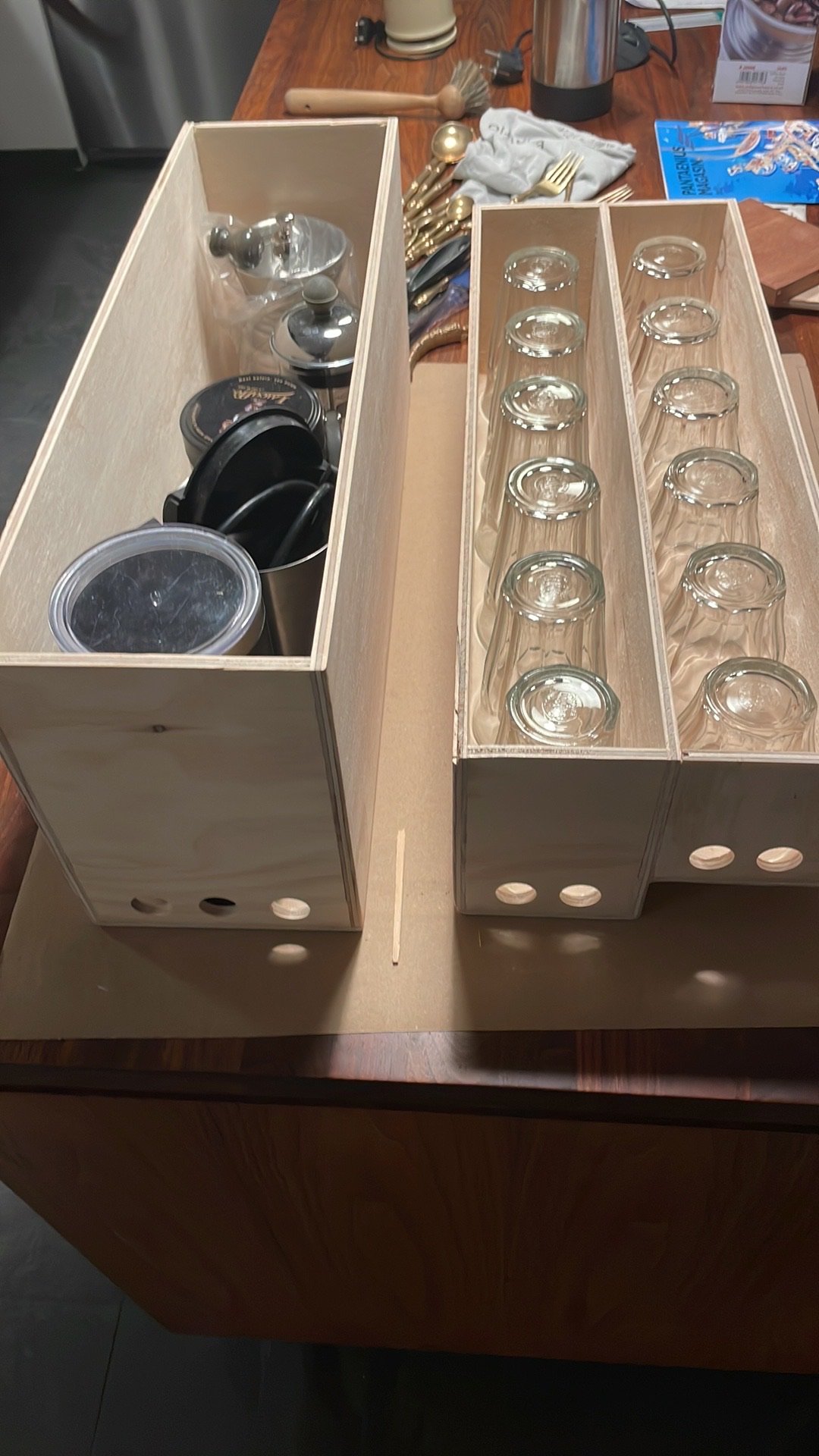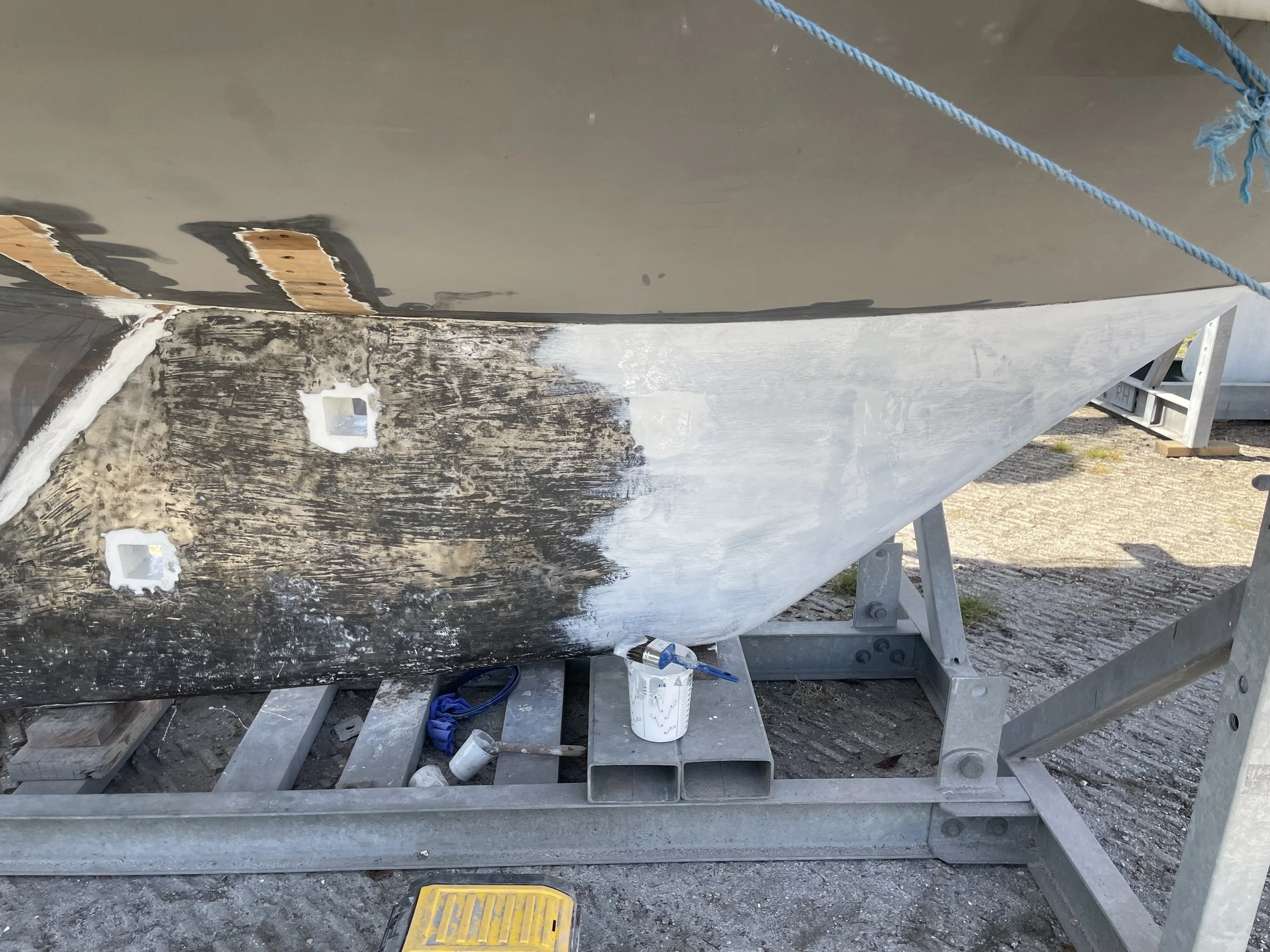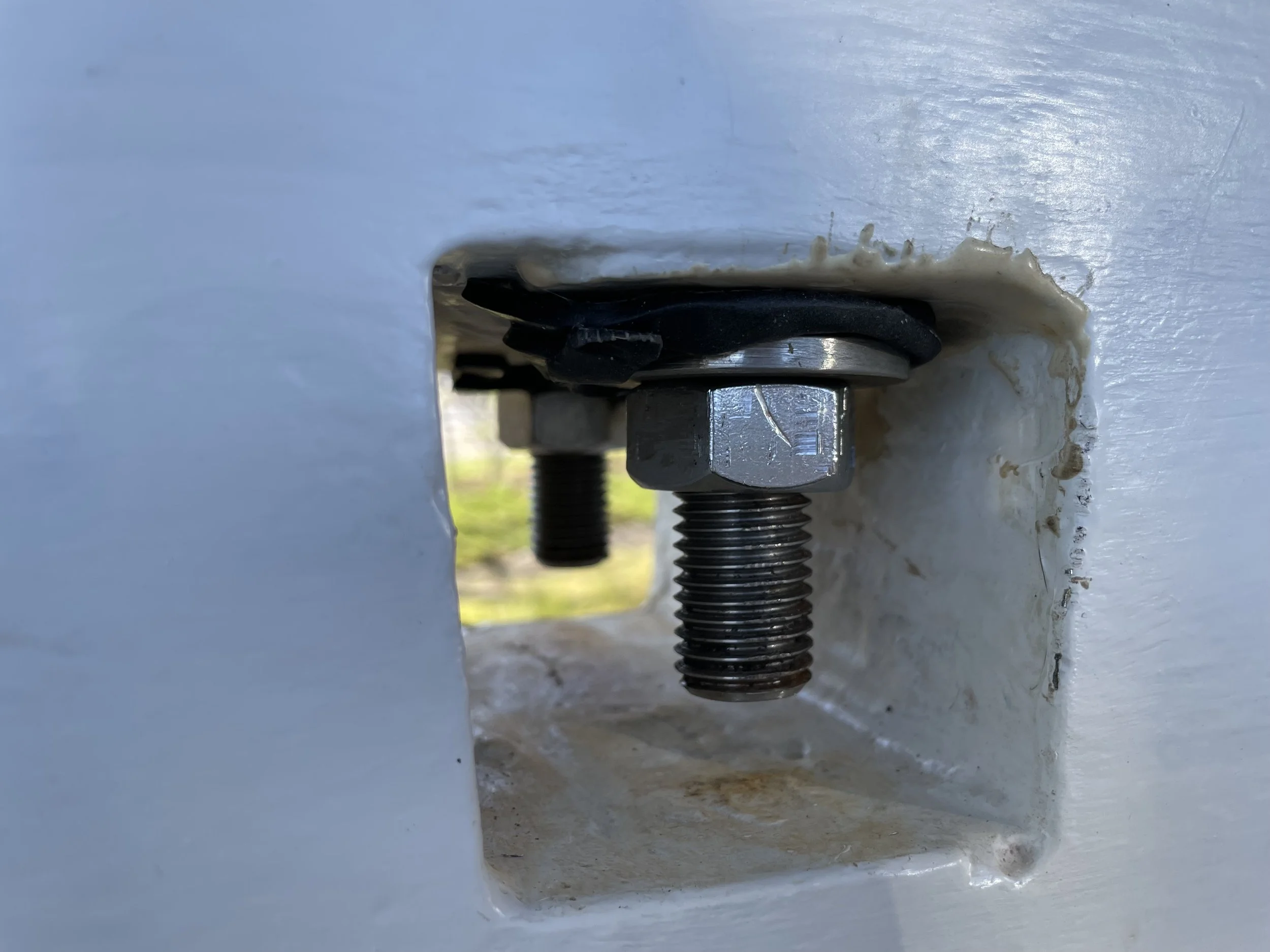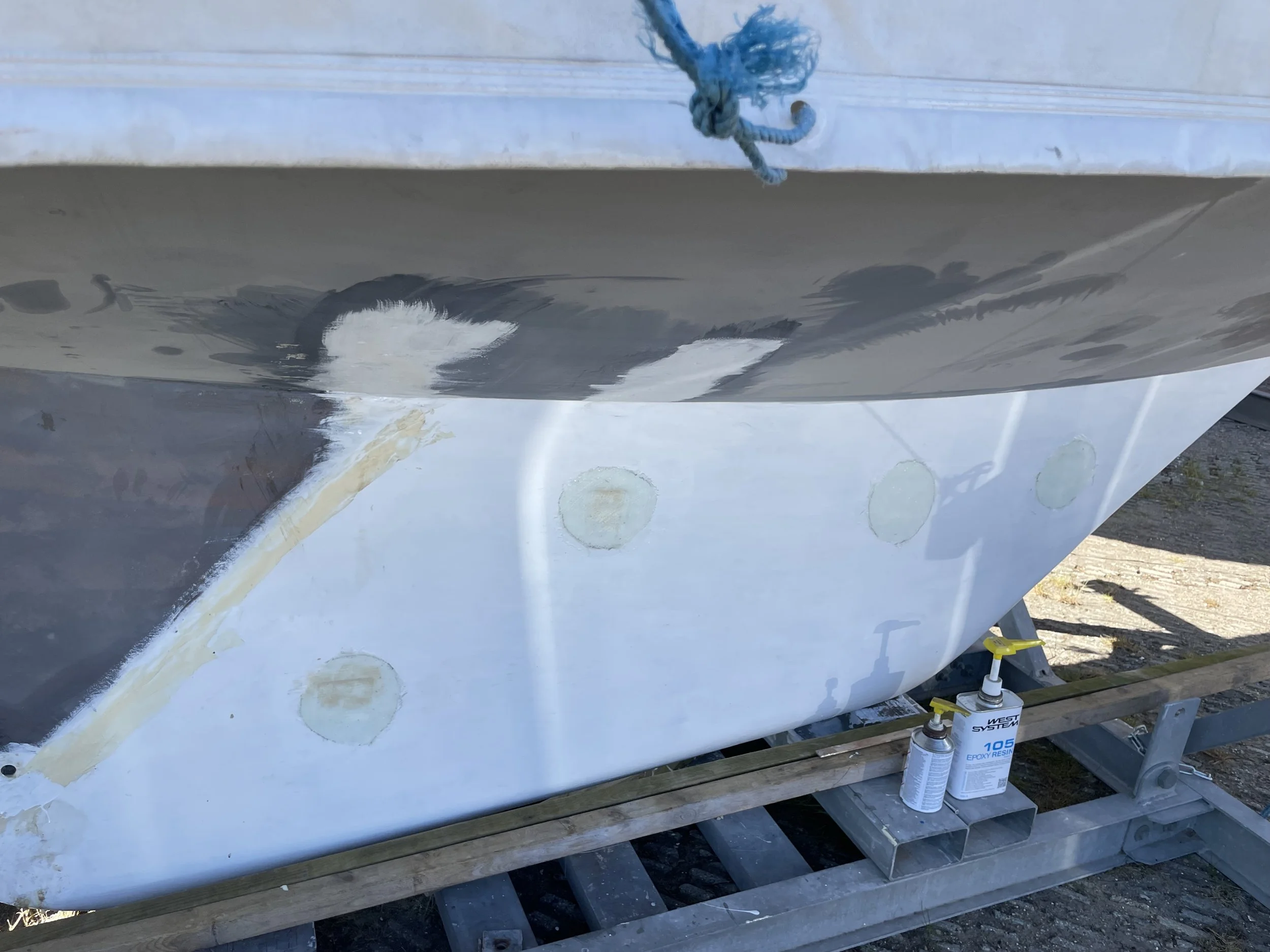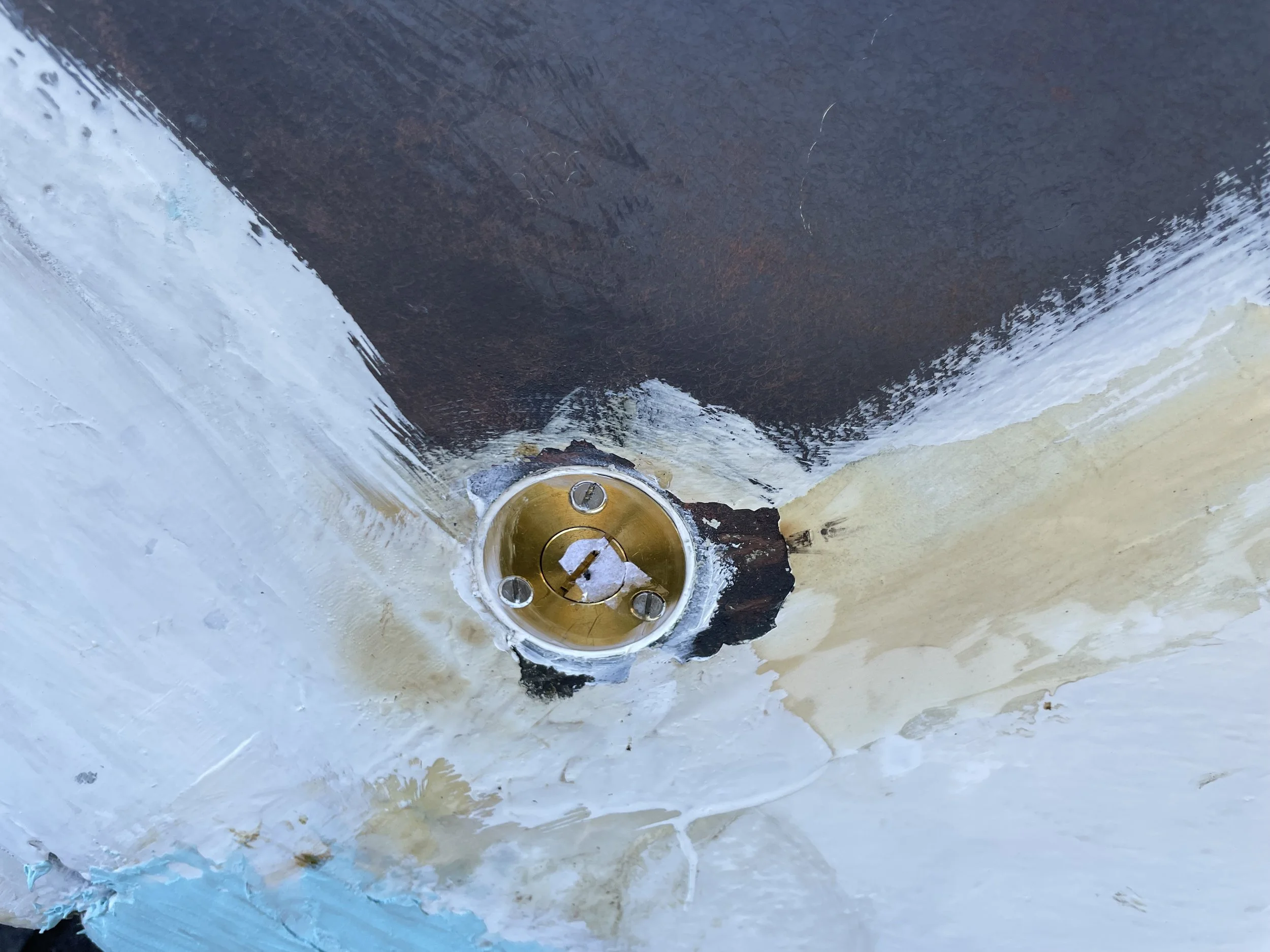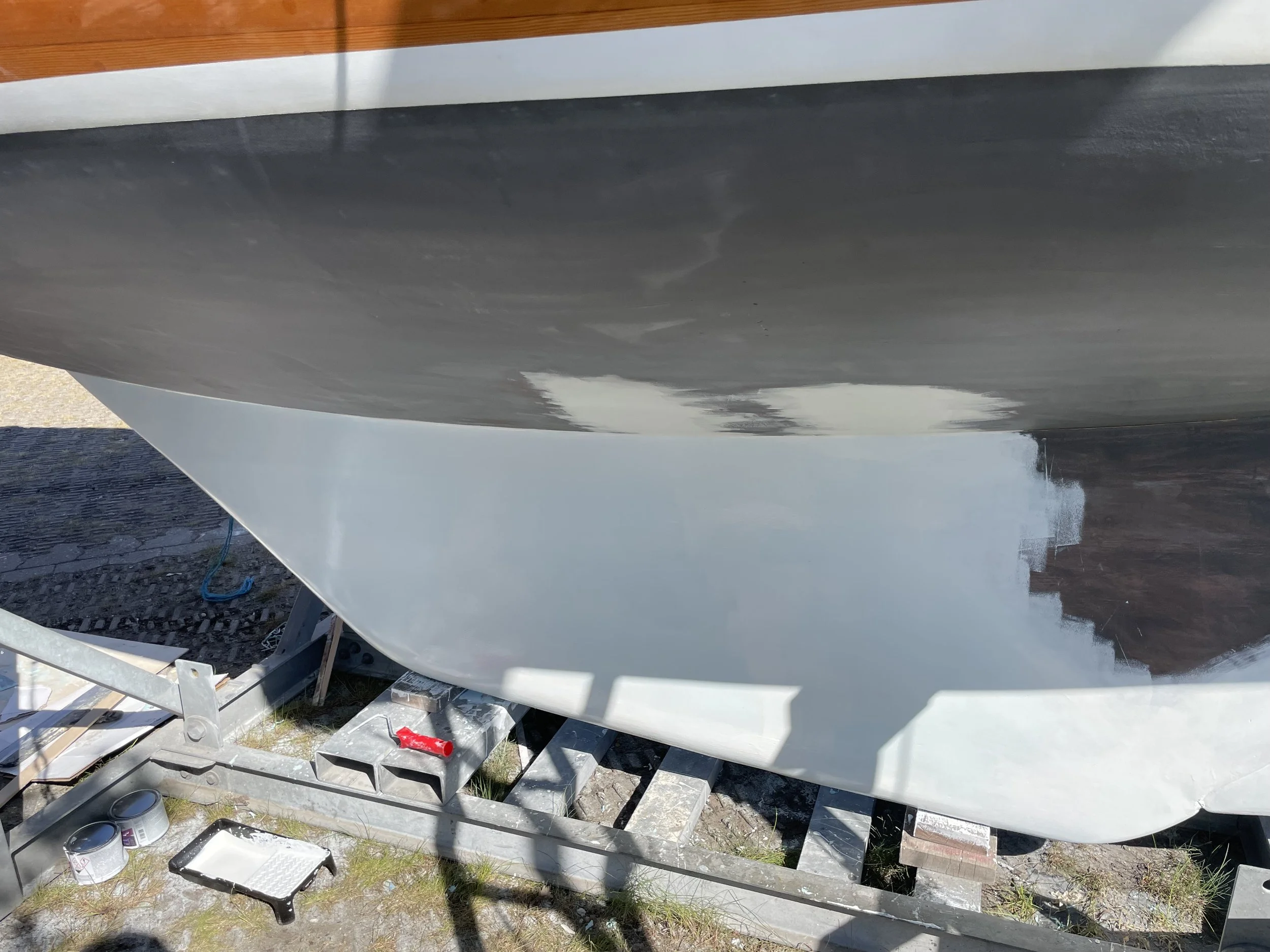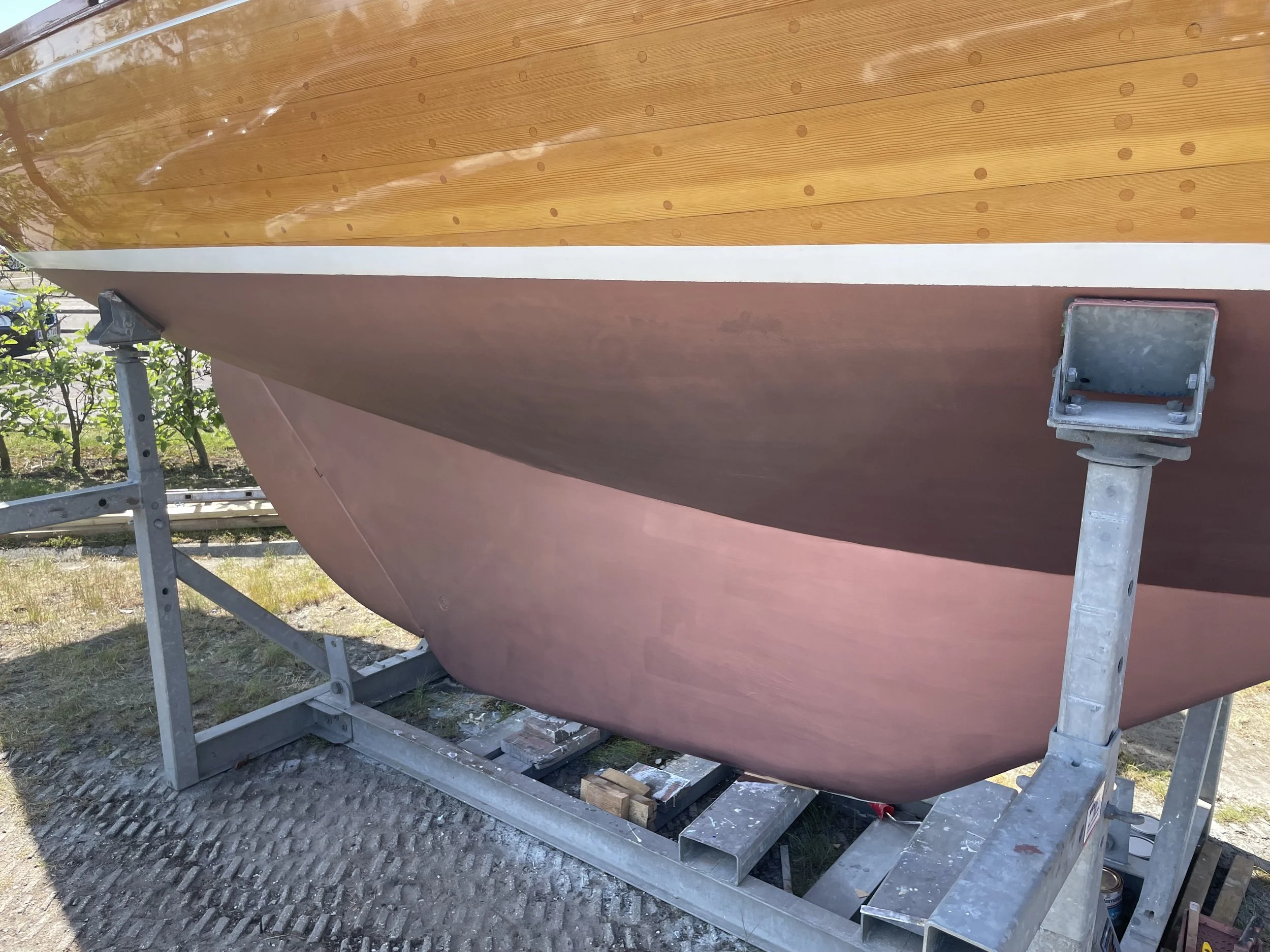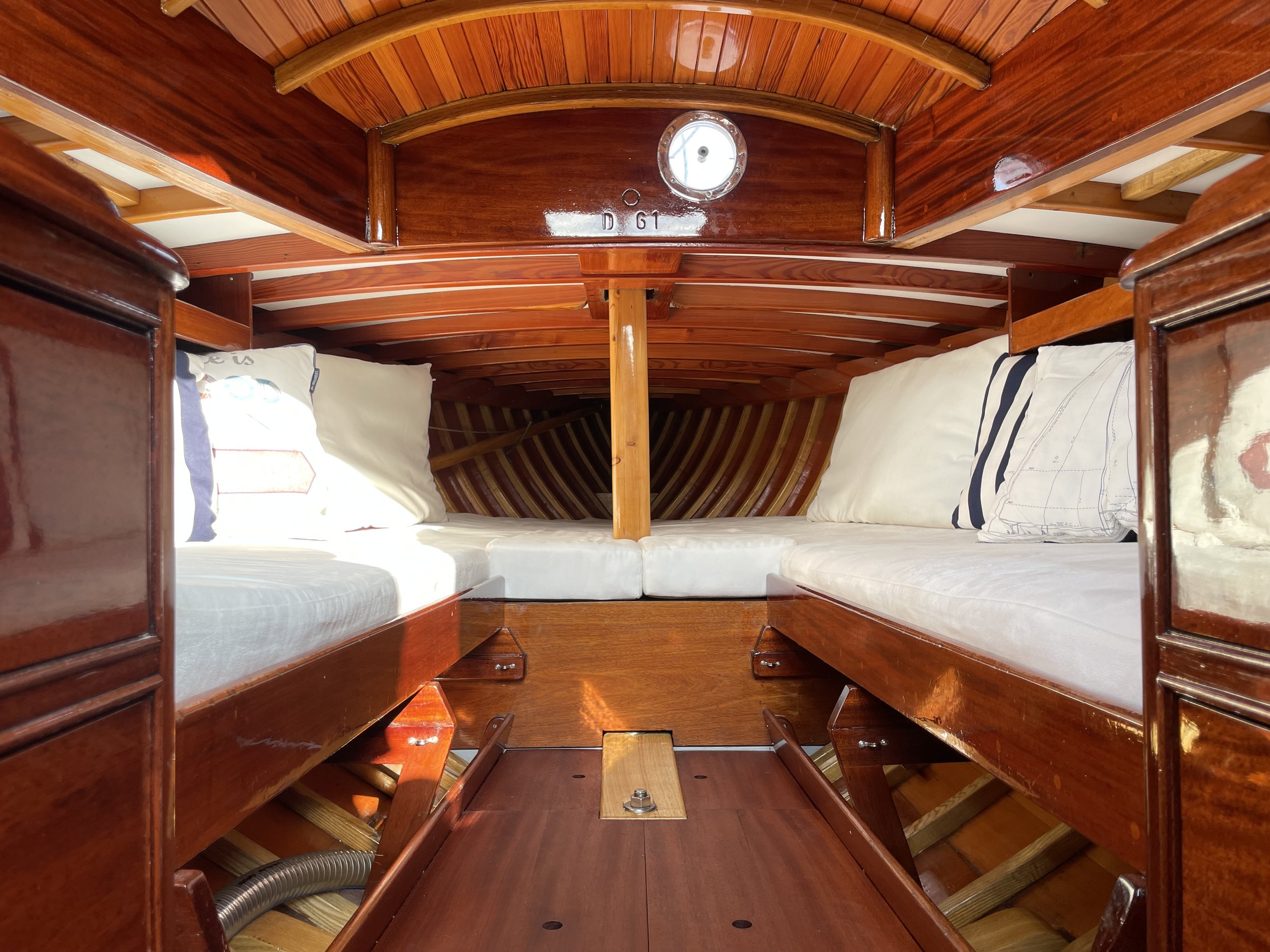2022 // 2023 PLAN C
Plan A, at the shipyard Walsteds, fell through. Plan B, a DIY approach with the help of a skilled boat builder and a cabinetmaker, partially fell through when the boat builder let me down. Hence, Plan C involving another boat builder.
Thanks to Robert for coming to the rescue.
The year's projects included replacing 2 more floor timbers and 3 keel bolts, but it required removing 2 drawer cabinets. For functional and aesthetic reasons, we built completely new drawer cabinets.
The cabin floor was also being replaced.
The keel was renovated, and also a new boat cover was made. Quite a handful!
Three new keel bolts
I used a jack and a crowbar to lift 2 of the keel bolts out. The last one had to come out the opposite way.
First, I turned and twisted the bolts to feel how much movement there was. It wasn't easy, but I managed to get them out. The keel timber is in good shape, but the bolts have certainly seen better days.
-

It sends shivers down your spine when you see the condition of one of the three keel bolts. The other two were in better condition but at around 75% of their original circumference. There's no doubt that getting them replaced now will be a relief for a peaceful night's sleep.
-

A bit of detective work is needed to locate the pockets in the keel that hide one end of the keel bolts.
-

The keel bolts, made of stainless steel, were produced by Walsteds Bådværft. Two of the bolts are 20 mm thick, and the last one is 16 mm thick. I'm sure they will last for many years to come.
2 new floor timbers
-
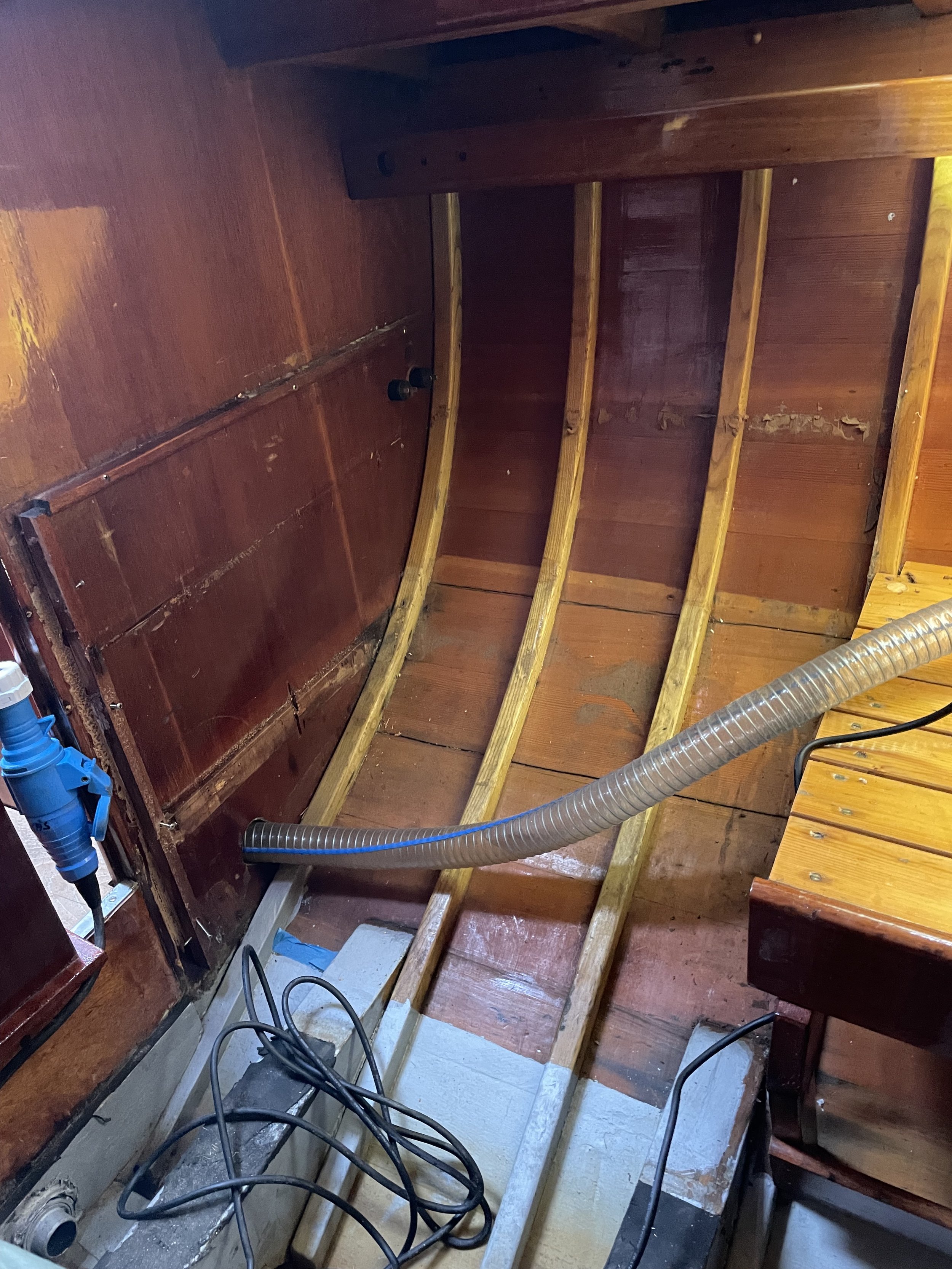
The dismantling of the chest of drawers was necessary to access the 2 floor timbers and their associated 3 keel bolts.
Reuse of the chest of drawers was not possible, thankfully. The chest was not original and was very clunky in appearance and made without finesse. -
There wasn't much healthy wood left in the floor timbers either. One of the 2 floor timbers was worse than the other. It's called dry rot. The wood is rotten but dry, and there is still strength in the floor timbers, but they are clearly overdue for replacement and had probably been so for a while.
-

Templates for the new floor timbers are made.
Since one cannot expect to remove the floor timbers whole, it's important to create templates before the removal. -

I received the oak plank from Walsteds. It was the last one they had, and it had knots and other imperfections. Therefore, I sent my templates to Walsteds so they could mark on the plank and see if they could make two good floor timbers out of it. Fortunately, they were able to.
-
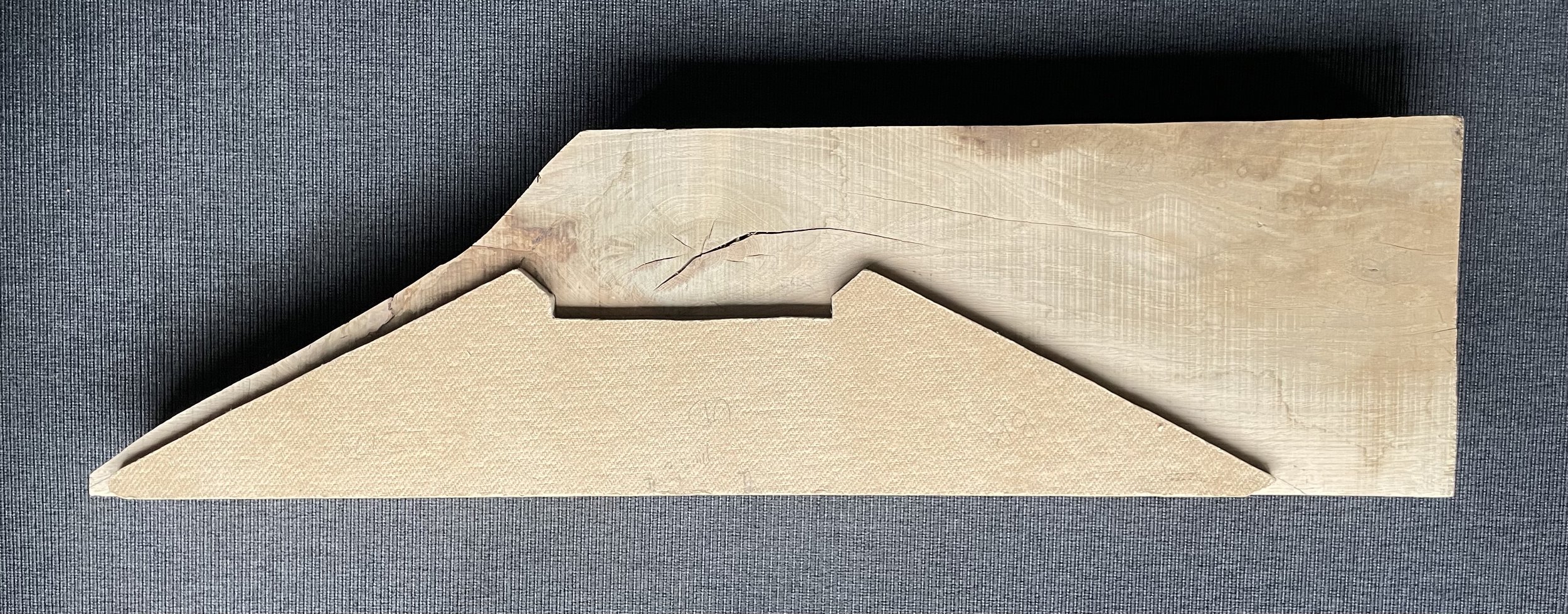
I cut the plank into smaller pieces and then had a machine carpenter cut them out for me. In addition, I used some of the remaining good quality wood to make a cutlery tray for one of the new drawers.
-

Customized, painted, and installed with new keel bolts. The fitting was the most time-consuming part, and it was done by the boatbuilder. In total, 7 floor timbers and 9 keel bolts have been replaced.
New Cabin Sole
-

Although the cabin sole has a beautiful patina, it developed cracks and required several repairs. Additionally, it was in 6 sections, which created a somewhat cluttered appearance from an aesthetic perspective. When replacing the drawer units, it made sense to renew the cabin sole as well.
-

New (SIPO) mahogany was purchased, and some of it was used for the new cabin sole and drawer units.
-

After preparing the rough wood, I created a template for the new cabin sole.
-
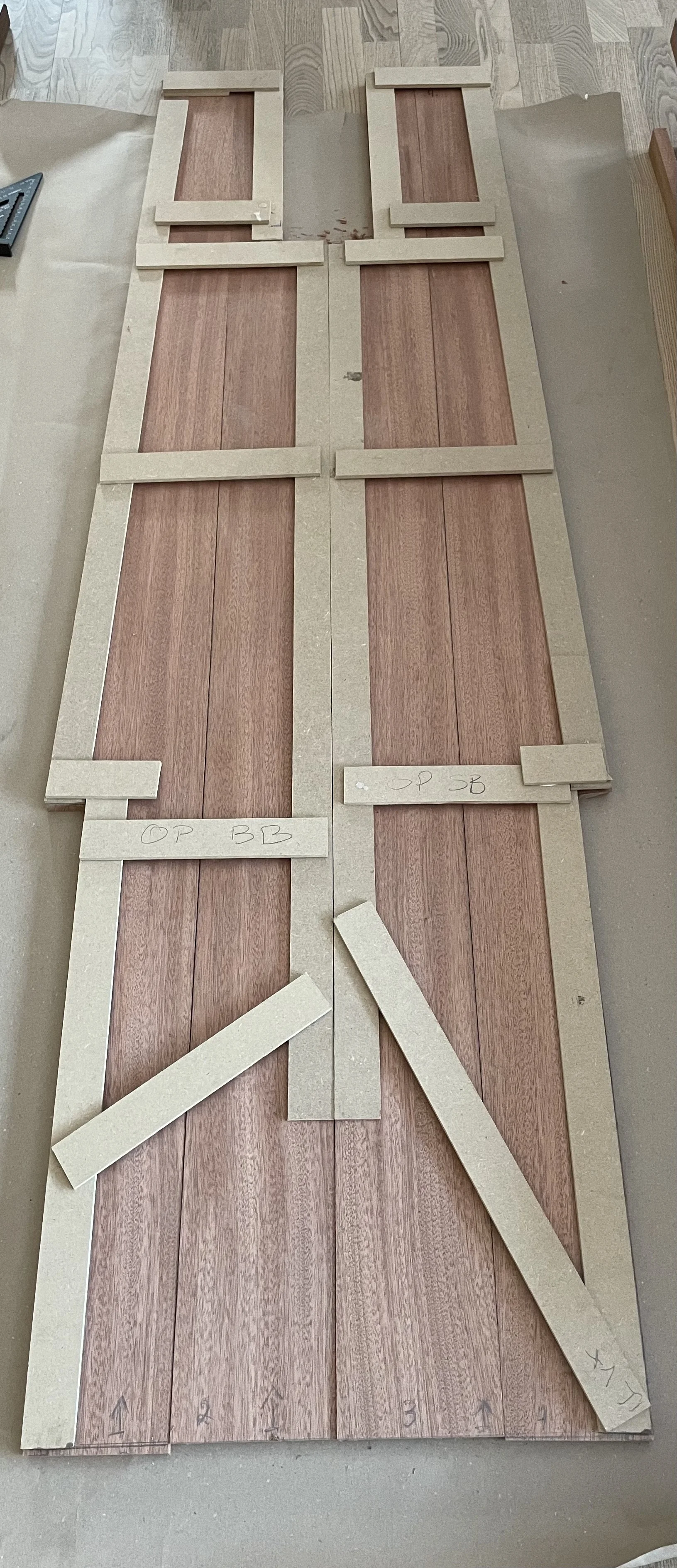
The template is placed on the prepared planks and traced onto the wood, after which the wood is cut out. I cut it with some extra allowance. Adjustment is therefore necessary.
-

The fitting of the new cabin sole in the boat is what takes the most time. You have to approach the measurements carefully. Unfortunately, there's not much room for error.
-
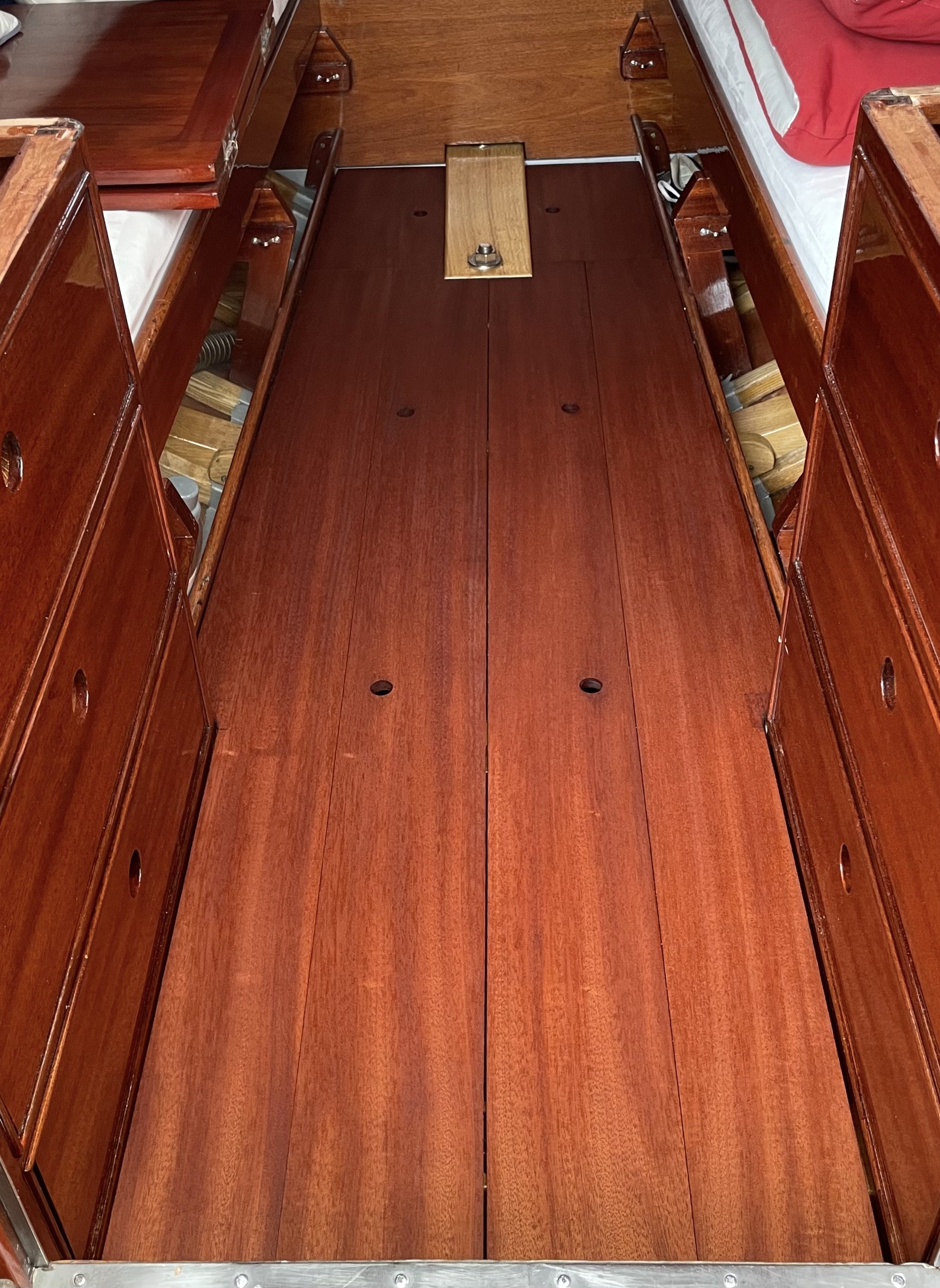
The finished cabin sole in oiled mahogany looks great and the overall appearance is much more cohesive, partly due to the planks' consistent width.
The plan is for the lines to continue into the cockpit's teak deck. A new teak deck is next year's project.
New
drawer cabinets.
I hope the original drawer cabinets had a somewhat similar appearance to the ones I've made. The ones I've made certainly look like they've always been there. Now, they are even more functional for our use of the boat.
I couldn't be more satisfied. It was an extensive job to make the two new drawer cabinets out of solid mahogany with rounded corner posts and profiled moldings. Two drawers on runners and two doors (lower). But it was all worth it.
-

The drawer insert is made of solid oiled oak and features a handcrafted cutlery insert. We've utilized the space behind the drawers to create a vertical drawer with a lid in the countertop. There are profiled table moldings and profiled moldings in the drawer openings.
-
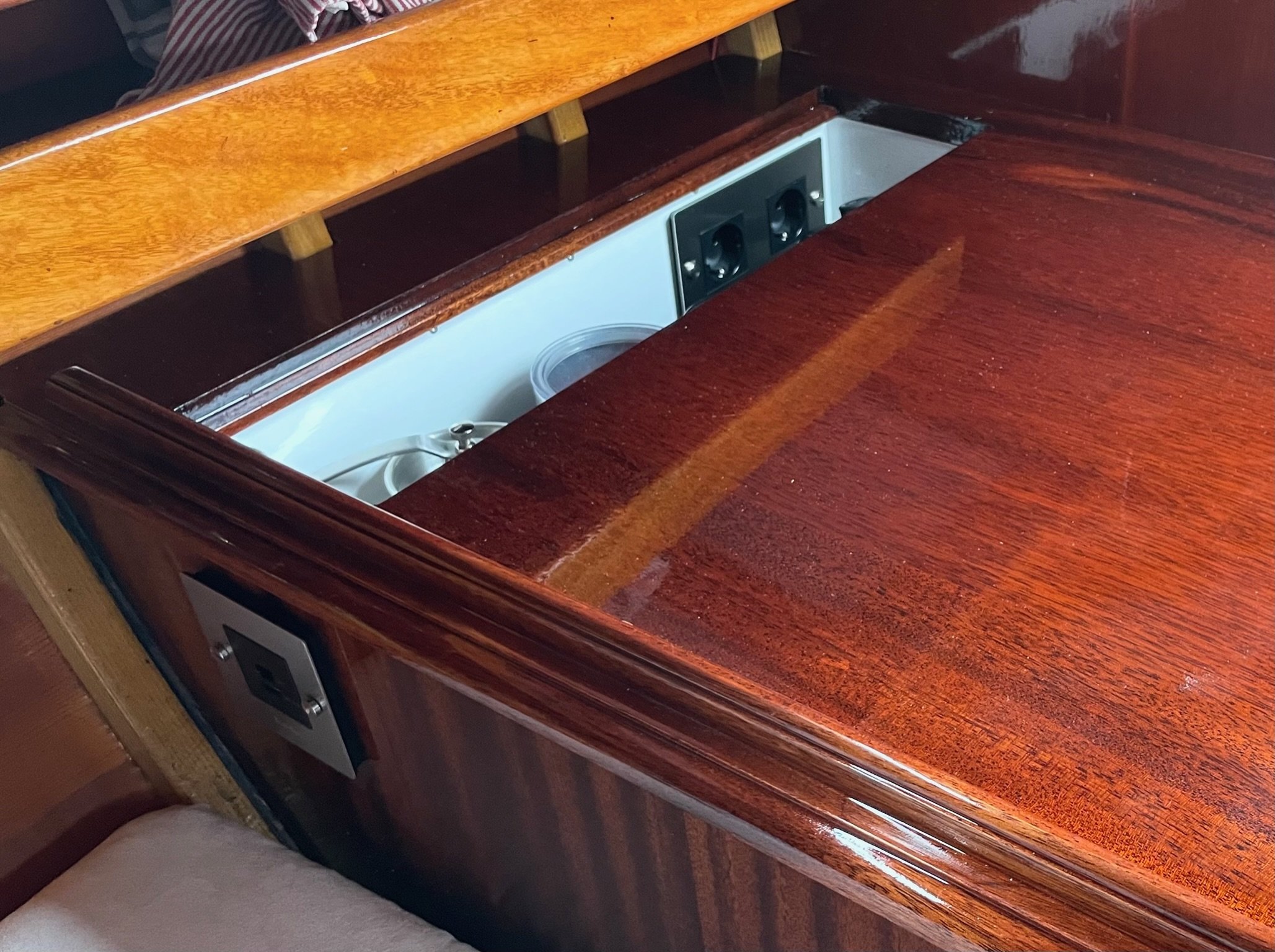
Here is the deep drawer on the starboard side, with 2 internal power outlets for shore power. We use the drawer for our coffee brewing equipment: coffee beans, manual grinder, small electric kettle for water, and a milk frother. On the outside, you can see power outlets for mobile phones and computers.
-

Cafe Latte. What better way to start the day? Proper coffee is a must when cruising on DIVA.
-

I'm not an architect, but an intermediate drawing was necessary so the cabinet maker could cut the wood to the right dimensions. I got it the way I wanted, and everything fit, fortunately. I've measured countless times.
-

The solid oak drawer inserts were made by a specialized kitchen company to my measurements. I was quite anxious to see if they would fit when everything had to be installed. They fit, but it's an incredibly tight fit. It didn't leave me much room for errors, but who cares now?
-
I had the deep drawer inserts carpentered on the kitchen table at home using relatively inexpensive 6 mm veneer. One of the inserts has two heights because there wasn't enough space for more. Luckily, it fits perfectly with the classic French Picardie glasses we have in two sizes, just what we need. The inserts were painted with 2-component epoxy paint. The holes are for ventilation and placed in both ends.
-

Detail: Profiled trim in the drawer opening. Great work by the cabinet maker.
-

Detail: Profiled edges and rounded corner. The rounded corner is handcrafted.
-

Detail: I managed to make the tabletop with the profiled edge align quite well with the edge of the bulkhead. Almost perfect.
-

The French Picardie glasses can be used for both water and wine. Admittedly, we don't cook dinner on board. We sail to places where we know we can buy dinner. If we don't succeed, it's bread and cold cuts. Our dinner here is from our favorite restaurant: Restaurant Oliva in Hornbæk (Zealand).
-

The French Picardie glasses have found their place in the boat and are placed on a thin neoprene mat. They stand securely during sailing and are easy to access when needed.
-

The port side drawer unit, with two drawers on slides and one vertical drawer, are accessible from the table. The lower part is a door hinged with concealed hinges.
-

The "custom-made" cutlery tray I had to create myself. I used some of the leftover oak from the flooring. And there was also enough wood for a knife block. The large empty space is for our plates.
-

Because of the design as is, there's not much room for adjustments, and it just has to fit right, otherwise it wouldn’t work. That meant I had to spend a lot of time getting things aligned.
-

Completed work and a huge upgrade of DIVA’s interior.
The Keel
I had originally planned to only seal the holes in the keel for the keel bolts, but the always motivating Henrik Søderlund pointed out that my keel had several challenges, and when you're already at it, why not. Thanks to Henrik for the motivation and a big thanks to Mikkel Styrbjørn Hartvig Andersen for invaluable help with the hard, dirty work.
What a feeling
Life on DIVA is primitive luxury. There's no standing headroom, but the atmosphere in here is absolutely wonderful. The sound of water against wood. And it smells good here. White Alcantara complements the dark wood fantastically and brightens up the whole cabin.
Sometimes, when I wake up after a good night's sleep, I just lie there and look - and feel how romantic and cozy it is here.
In the middle, between the two berths, we fill it with a mattress so the whole cabin becomes one big cohesive bed.





